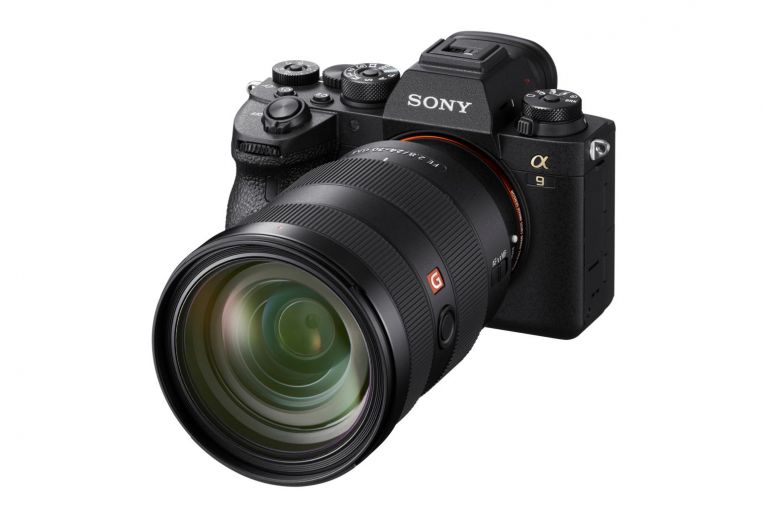Launched in 2017, the a9 is Sony’s flagship full-frame mirrorless camera that is targeted at professional, action and sports photographers. Now, its successor, a9 II , is here.
It retains many of the key specs of the a9, including the 24.2-megapixel Exmor RS stacked-design image sensor, 3.69-million-dot electronic viewfinder (EVF), 1.44-million-dot rear touchscreen LCD, up to 20 frames per second (fps) shooting speed, and 693 phase-detection and 425 contrast-detection autofocusing (AF) points.
The stacked-design image sensor has the processing circuit and integral memory located just behind its pixel area to deliver data to the Bionz X image processor to sustain its fast processing speeds. While the a9 II might have the same image processor, it is said to have been upgraded to improve the camera’s AF speed, face detection, EVF response time and subject tracking.
There is also an improvement in the shooting speed department. While both cameras have the same shooting speed of up to 20fps, this only applies when using the electronic shutter.
With the a9, shooting speed is reduced to 5fps when using the mechanical shutter. With the a9 II, it is only reduced to 10fps. Mechanical shutter reduces rolling shutter distortions, while electronic shutter has the advantage of silent operation.
Design-wise, the a9 II looks similar to its predecessor but there are slight changes. It has a slightly more pronounced grip, thicker buttons and the exposure compensation dial – sited on its top right corner – now has a locking button to prevent accidental movement. Its rear AF joystick has a more knurled texture for better grip.
Overall, the a9 II improves upon its predecessor’s superb handling.
In addition, both its memory slots support the faster UHS-II format. This is unlike the a9, which only has one slot supporting it. And instead of its predecessor’s use of the micro-USB port for charging, the a9 II has a USB-C port for faster charging and quicker transfer of images.
However, with the Olympics happening this year, I feel Sony should have supported the ultra-fast CFexpress cards instead to cater to news and sports photographers. For instance, Canon’s newly-announced EOS 1D X Mark II flagship DSLR camera has two CFexpress card slots.
I tested the a9 II with Sony’s FE 24-70mm f/4 GM lens, though a 300mm telephoto lens is probably what I need to really test this camera’s mettle in sports and wildlife photography.
Still, the a9 II is really quick. It takes 1.5 seconds for both start-up and shut-down operations, compared with the usual 2 seconds of most mirrorless cameras.
Using a UHS-II SD card with a writing speed rated at 299MB per second, it shot 243 RAW images in 16.1 seconds before the buffer ran out. This is amazing, as many DSLR cameras could not match this performance.
In bright sunlight, AF was instantaneous. Even in dim lighting conditions, the camera took only 0.5sec to secure a focus with the help of the AF assist light.
Image quality is excellent. Images are sharp and have great dynamic range with plenty of details, even in the darker areas.
Noise performance is equally impressive. There were very few noise artefacts even at ISO 6,400. At ISO 12,800, noise artefacts were more evident but the detail loss was minimal.
Even the photos taken at ISO 25,600 are good enough for small prints and Web use, as I found out with photographing stray cats in my neighbourhood at night using that ISO setting. But I would not recommend anything at ISO 51,200 and above, as the detail loss will be really evident and you will also see discolouration.
Battery life is slightly better than its predecessor’s. The a9 II is rated at 690 still images compared to its predecessor’s 650. In my tests, the a9 II can shoot around 680 still images before the battery goes flat, while most mirrorless camera usually manage around 350.
Perhaps the only downer is its price. At $6,299 for the body alone, it represents a much more hefty investment compared to its a7 series cousins. But the a9 II is targeted at professionals, who will find the camera to be great value for money.
FOR
– Swift operation
– Excellent image quality
– Super-fast shooting speed
– Long battery life
AGAINST
– Relatively expensive
– No CFexpress card slot
TECH SPECS
PRICE: $6,299 (body only)
IMAGE SENSOR: 24.2-megapixel full-frame Exmor CMOS
SCREEN: 3-inch tiltable touchscreen LCD with 1,440,000 dots; electronic viewfinder with 3,686,400 dots
SENSITIVITY: ISO 50 to 204,800
SHOOTING SPEED: Up to 20 frames per second
CONNECTIVITY: Wi-Fi, Near Field Communication and Ethernet
WEIGHT: 678g (body only, with battery and memory card)
RATING
FEATURES: 4/5
DESIGN: 4.5/5
PERFORMANCE: 5/5
BATTERY LIFE: 4.5/5
VALUE FOR MONEY: 4/5
OVERALL: 4.5/5
ST Tech Editor’s Choice
Source: Read Full Article
